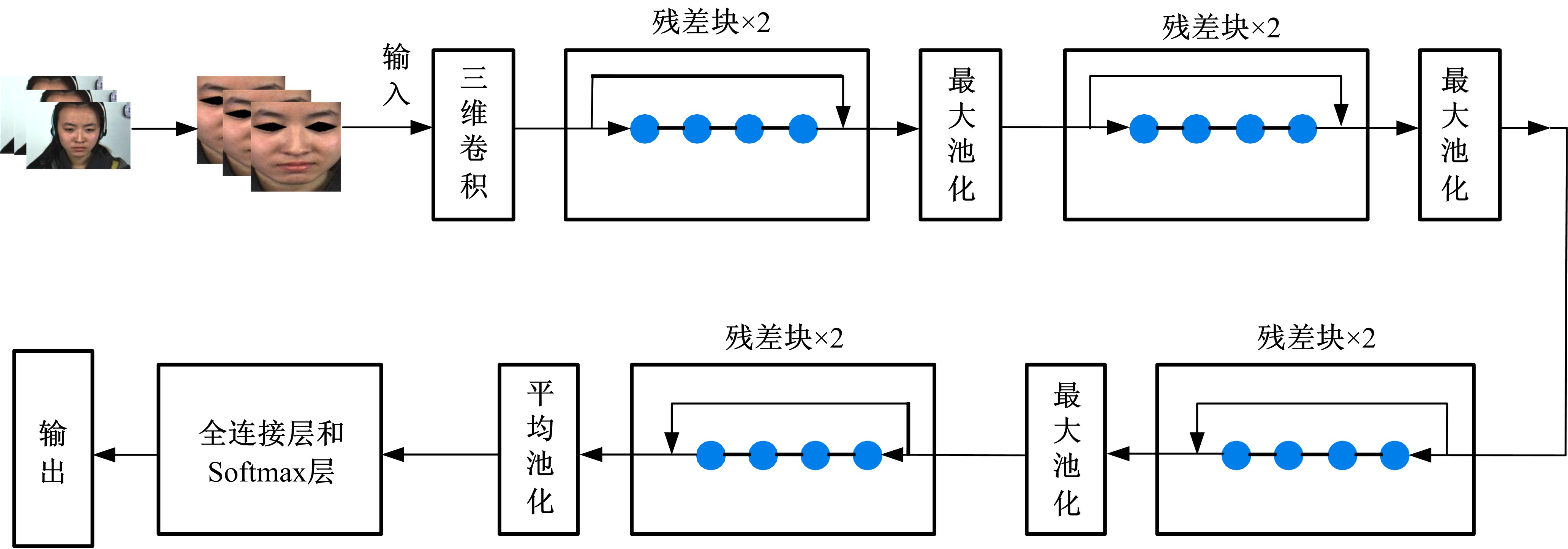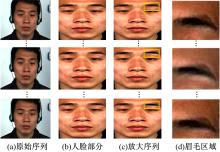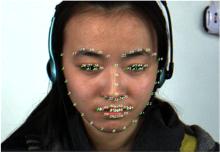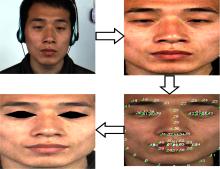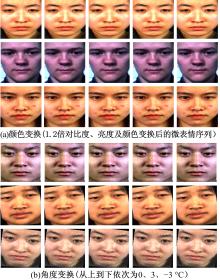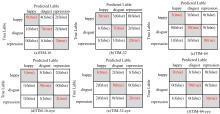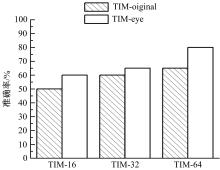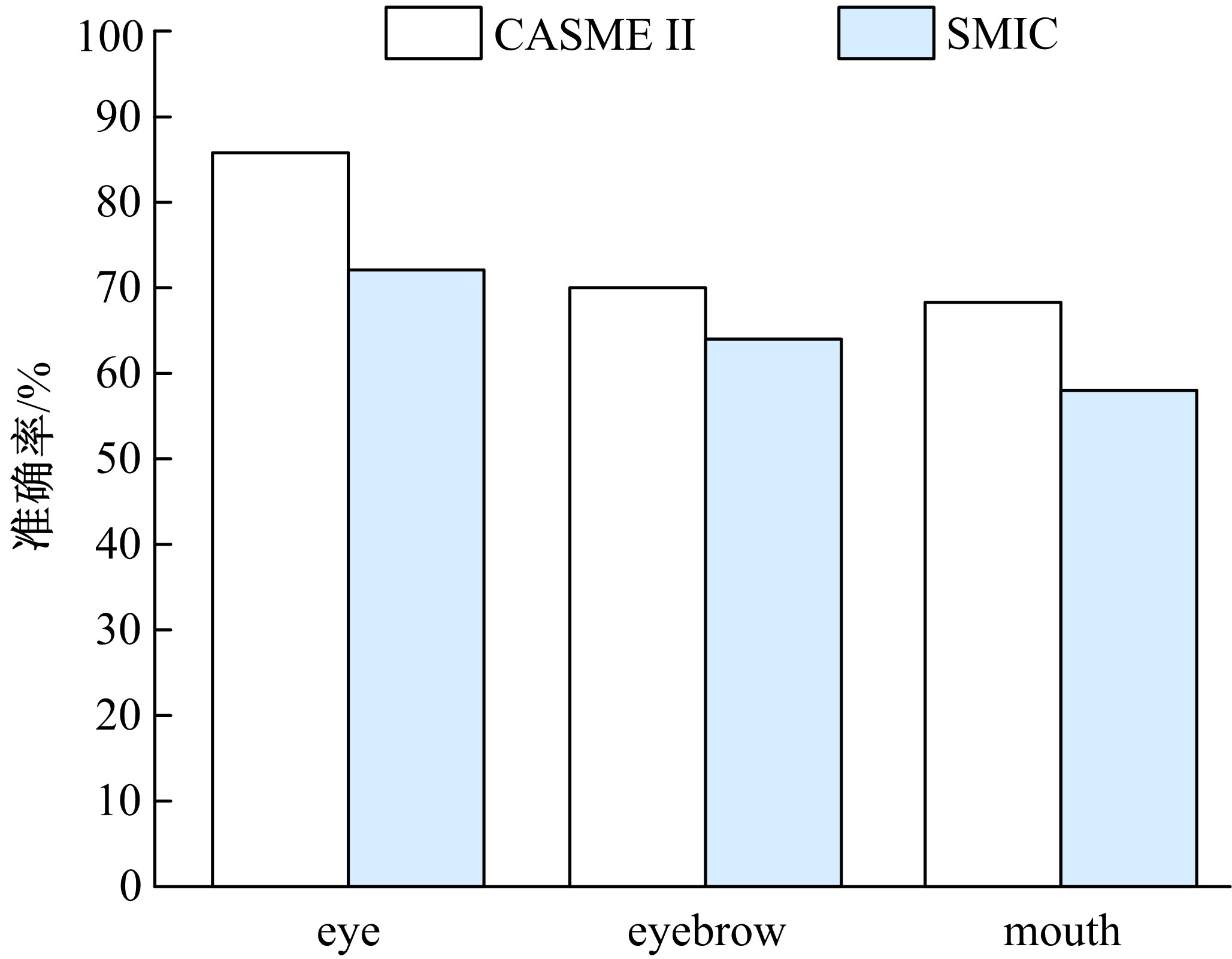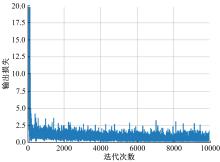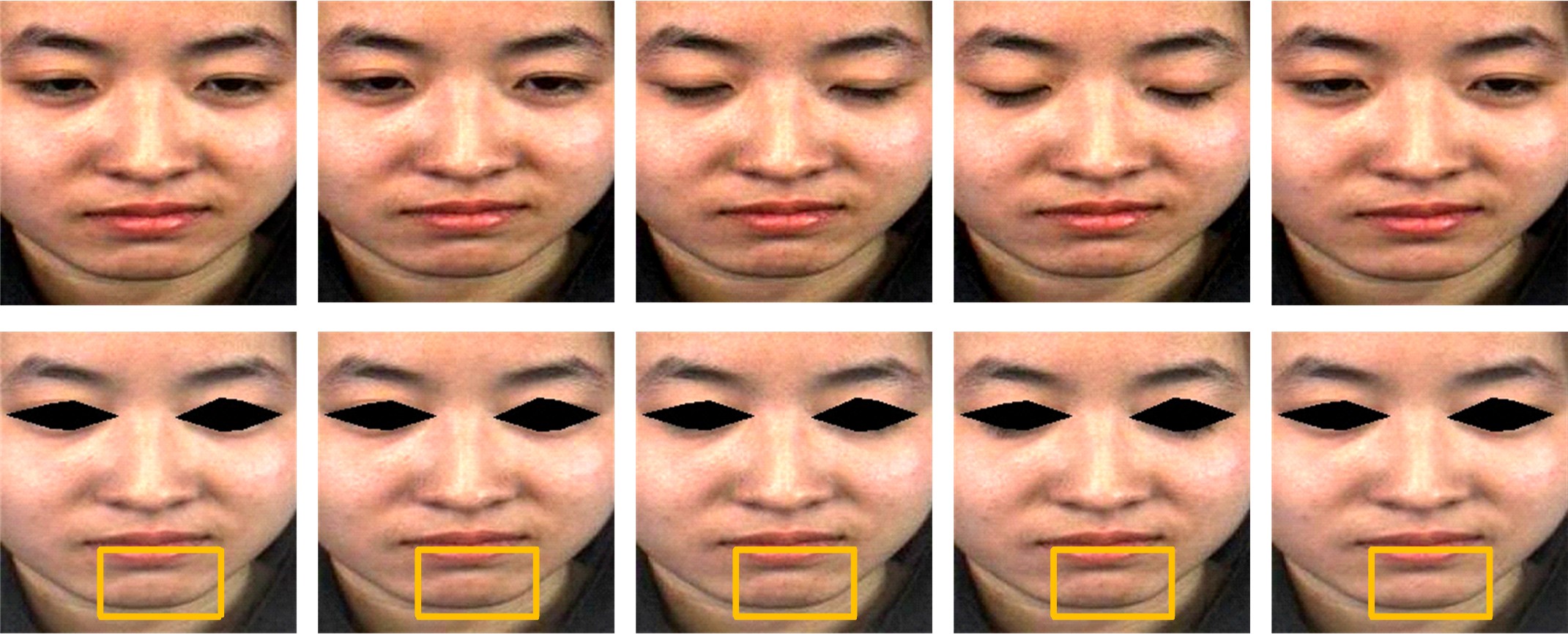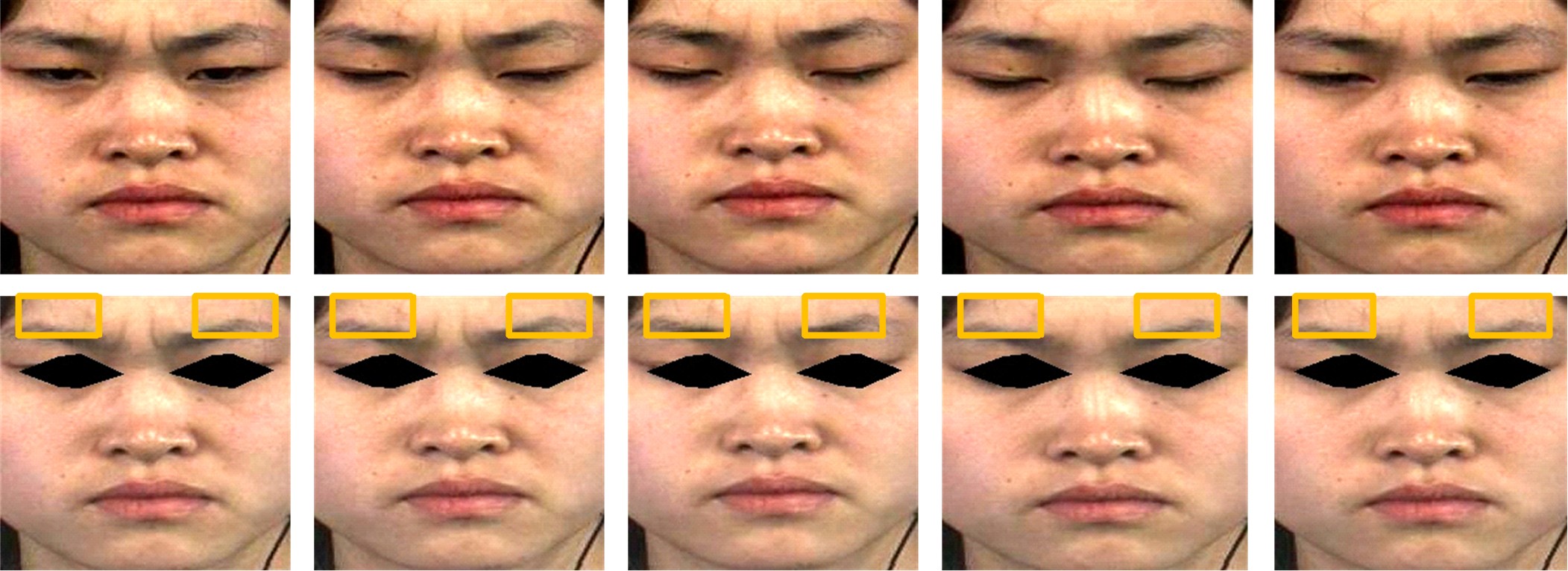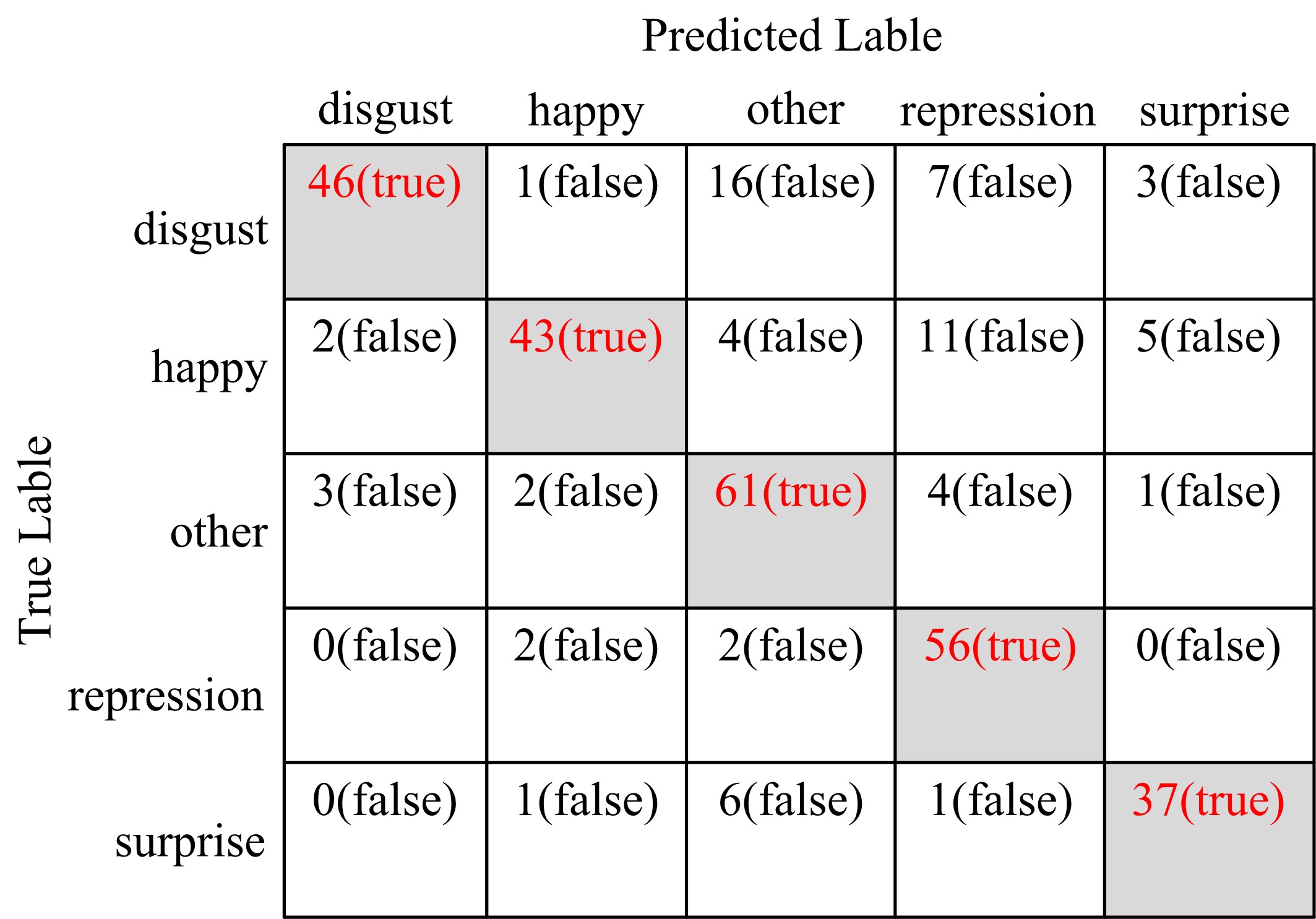Journal of Jilin University(Engineering and Technology Edition) ›› 2021, Vol. 51 ›› Issue (1): 303-313.doi: 10.13229/j.cnki.jdxbgxb20190939
Face micro-expression recognition based on ResNet with object mask
Ming FANG1,2( ),Wen-qiang CHEN1
),Wen-qiang CHEN1
- 1.College of Computer Science and Technology,Changchun University of Science and Technology,Changchun 130022,China
2.College of Artificial Intelligence,Changchun University of Science and Technology,Changchun 130022,China
CLC Number:
- TP391.4
| 1 | Wu Q, Shen X, Fu X. Micro-expression and its applications[J]. Advances in Psychological Science, 2010, 18(9): 1359-1368. |
| 2 | Pfister T, Li X, Zhao G, et al. Recognising spontaneous facial micro-expressions[C]∥International Conference on Computer Vision, Barcelona, Spain, 2011: 1449-1456. |
| 3 | Shen X B, Wu Q, Fu X L. Effects of the duration of expressions on the recognition of micro-expressions[J]. Journal of Zhejiang University Science B:Biomedicine & Biotechnology, 2012, 13(3): 221-230. |
| 4 | Yan W J, Wu Q, Liang J, et al. How fast are the leaked facial expressions: the duration of micro-expressions[J]. Journal of Nonverbal Behavior, 2013, 37(4): 217-230. |
| 5 | Russell T A, Chu E, Phillips M L. A pilot study to investigate the effectiveness of emotion recognition remediation in schizophrenia using the micro-expression training tool[J]. British Journal of Clinical Psychology, 2006, 45(4): 579-583. |
| 6 | 贲晛烨, 杨明强, 张鹏, 等. 微表情自动识别综述[J]. 计算机辅助设计与图形学学报, 2014, 26(9): 1385-1395. |
| Xian-ye Ben, Yang Ming-qiang, Zhang Peng, et al. Survey on automatic micro expression recognition methods[J]. Journal of Computer-Aided Design & Computer Graphics, 2014, 26(9): 1385-1395. | |
| 7 | Zhao G, Pietikainen M. Dynamic texture recognition using local binary patterns with an application to facial expressions[J]. IEEE Transactions on Pattern Analysis and Machine Intelligence, 2007, 29(6): 915-928. |
| 8 | Wang Y, See J, Phan W, et al. LBP with six intersection points: Reducing redundant information in LBP-TOP for micro-expression recognition[C]∥Asian Conference on Computer Vision, Singapore, 2015: 525-537. |
| 9 | Huang X H, Wang S J, Zhao G Y, et al. Facial micro-expression recognition using spatiotemporal local binary pattern with integral projection[C]∥IEEE International Conference on Computer Vision Workshops(ICCV), Santiago, Chile, 2015: 1-9. |
| 10 | Li X, Hong X, Moilanen A, et al. Towards reading hidden emotions: a comparative study of spontaneous micro-expression spotting and recognition methods[J]. IEEE Transactions on Affective Computing, 2018, 9(4): 563-577. |
| 11 | Ben X, Zhang P, Yan R, et al. Gait recognition and micro-expression recognition based on maximum margin projection with tensor representation[J]. Neural Computing and Applications, 2016, 27(8): 2629-2646. |
| 12 | Liu Y J, Zhang J K, Yan W J, et al. A main directional mean optical flow feature for spontaneous micro-expression recognition[J]. IEEE Transactions on Affective Computing, 2016, 7(4): 299-310. |
| 13 | Happy S L, Routray A. Fuzzy histogram of optical flow orientations for micro-expression recognition[J]. IEEE Transactions on Affective Computing, 2017, 10(3): 394-406. |
| 14 | Kim D H, Baddar W J, Ro Y M. Micro-Expression recognition with expression-state constrained spatio-temporal feature representations[C]∥Proceedings of the ACM on Multimedia Conference, Amsterdam, The Netherlands, 2016: 382-386. |
| 15 | Li J, Wang Y, See J, et al. Micro-expression recognition based on 3D flow convolutional neural network[J]. Pattern Analysis and Applications, 2019, 22(4): 1331-1339. |
| 16 | Khor H Q, See J, Liong S T, et al. Dual-stream shallow networks for facial Micro-expression recognition[C]∥ IEEE International Conference on Image Processing, Taipei,China, 2019: 36-40. |
| 17 | Zhou Z, Zhao G, Guo Y, et al. An image-based visual speech animation system[J]. IEEE Trans on Circuits and Systems for Video Technology, 2012, 22(10): 1420-1432. |
| 18 | Wu H Y, Rubinstein M, Shih E, et al. Eulerian video magnification for revealing subtle changes in the world[J]. ACM Transactions on Graphics, 2012, 31(4): 1-8. |
| 19 | Cohn J F, Ambadar Z, Ekman P. Observer-based measurement of facial expression with the facial action coding system[J]. Neuroscience Letters, 2007, 394(3): 203-221. |
| 20 | Kazemi V, Josephine S. One millisecond face alignment with an ensemble of regression trees[C]∥IEEE Conference on Computer Vision and Pattern Recognition, Columbus, OH, USA, 2014: 1867-1874. |
| 21 | He K, Zhang X, Ren S, et al. Deep residual learning for image recognition[C]∥IEEE Conference on Computer Vision and Pattern Recognition(CVPR), Las Vegas, NV, USA, 2016: 770-778. |
| 22 | Li Y, Huang X, Zhao G. Can micro-expression be recognized based on single apex frame?[C]∥IEEE International Conference on Image Processing(ICIP), Athens, Greece, 2018: 3094-3098. |
| 23 | Yan W J, Li X, Wang S J, et al. CASME II: an improved spontaneous micro-expression database and the baseline evaluation[J]. PLoS One, 2014, 9(1): e86041. |
| 24 | Li X, Pfister T, Huang X, et al. A spontaneous micro-expression database: Inducement, collection and baseline[C]∥IEEE International Conference and Workshops on Automatic Face and Gesture Recognition (FG), Shanghai, China, 2013: 1-6. |
| 25 | Pfister T, Li X, Zhao G, et al. Recognising spontaneous facial micro-expressions[C]∥International Computer on Computer Vision, Barcelona, Spain, 2011: 1449-1456. |
| 26 | Huang X, Zhao G, Hong X, et al. Spontaneous facial micro-expression analysis using spatiotemporal completed local quantized patterns[J]. Neurocomputing, 2016, 175: 564-578. |
| 27 | Liong S T, See J, Wong K, et al. Less is more: Micro-expression recognition from video using apex frame[J]. Signal Processing: Image Communication, 2018, 62: 82-92. |
| 28 | Ben X, Jia X, Yan R, et al. Learning effective binary descriptors for micro-expression recognition transferred by macroinformation[J]. Pattern Recognition Letters, 2018, 107: 50-58. |
| [1] | Xiao-yu WANG,Xin-hao HU,Chang-lin HAN. Face pencil drawing algorithms based on generative adversarial network [J]. Journal of Jilin University(Engineering and Technology Edition), 2021, 51(1): 285-292. |
| [2] | Xiang-jiu CHE,You-zheng DONG. Improved image recognition algorithm based on multi⁃scale information fusion [J]. Journal of Jilin University(Engineering and Technology Edition), 2020, 50(5): 1747-1754. |
| [3] | Bing-hai ZHOU,Zhao-xu HE. Dynamic material handling scheduling for mixed⁃model assembly lines based on line⁃integrated supermarkets [J]. Journal of Jilin University(Engineering and Technology Edition), 2020, 50(5): 1809-1817. |
| [4] | Lei JIANG,Ren-chu GUAN. Design of fuzzy comprehensive evaluation system for talent quality based on multi⁃objective evolutionary algorithm [J]. Journal of Jilin University(Engineering and Technology Edition), 2020, 50(5): 1856-1861. |
| [5] | Yang LI,Shuo LI,Li-wei JING. Estimate model based on Bayesian model and machine learning algorithms applicated in financial risk assessment [J]. Journal of Jilin University(Engineering and Technology Edition), 2020, 50(5): 1862-1869. |
| [6] | Hong-wei ZHAO,Xiao-han LIU,Yuan ZHANG,Li-li FAN,Man-li LONG,Xue-bai ZANG. Clothing classification algorithm based on landmark attention and channel attention [J]. Journal of Jilin University(Engineering and Technology Edition), 2020, 50(5): 1765-1770. |
| [7] | Nai-yan GUAN,Juan-li GUO. Component awareness adaptive model based on attitude estimation algorithms [J]. Journal of Jilin University(Engineering and Technology Edition), 2020, 50(5): 1850-1855. |
| [8] | Zhou-zhou LIU,Wen-xiao YIN,Qian-yun ZHANG,Han PENG. Sensor cloud intrusion detection based on discrete optimization algorithm and machine learning [J]. Journal of Jilin University(Engineering and Technology Edition), 2020, 50(2): 692-702. |
| [9] | Xiao-hui WANG,Lu-shen WU,Hua-wei CHEN. Denoising of scattered point cloud data based on normal vector distance classification [J]. Journal of Jilin University(Engineering and Technology Edition), 2020, 50(1): 278-288. |
| [10] | Xiao-dong ZHANG,Xiao-jun XIA,Hai-feng LYU,Xu-chao GONG,Meng-jia LIAN. Dynamic load balancing of physiological data flow in big data network parallel computing environment [J]. Journal of Jilin University(Engineering and Technology Edition), 2020, 50(1): 247-254. |
| [11] | Shun-fu JIN,Xiu-chen QIE,Hai-xing WU,Zhan-qiang HUO. Clustered virtual machine allocation strategy in cloud computing based on new type of sleep-mode and performance optimization [J]. Journal of Jilin University(Engineering and Technology Edition), 2020, 50(1): 237-246. |
| [12] | Man CHEN,Yong ZHONG,Zhen-dong LI. Multi-focus image fusion based on latent low⁃rank representation combining low⁃rank representation [J]. Journal of Jilin University(Engineering and Technology Edition), 2020, 50(1): 297-305. |
| [13] | Jun-yi DENG,Yan-heng LIU,Shi FENG,Rong-cun ZHAO,Jian WANG. GSPN⁃based model to evaluate the performance and securi tytradeoff in Ad-hoc network [J]. Journal of Jilin University(Engineering and Technology Edition), 2020, 50(1): 255-261. |
| [14] | Tie-jun WANG,Wei-lan WANG. Thangka image annotation based on ontology [J]. Journal of Jilin University(Engineering and Technology Edition), 2020, 50(1): 289-296. |
| [15] | Xiong-fei LI,Jing WANG,Xiao-li ZHANG,Tie-hu FAN. Multi-focus image fusion based on support vector machines and window gradient [J]. Journal of Jilin University(Engineering and Technology Edition), 2020, 50(1): 227-236. |
|
||



